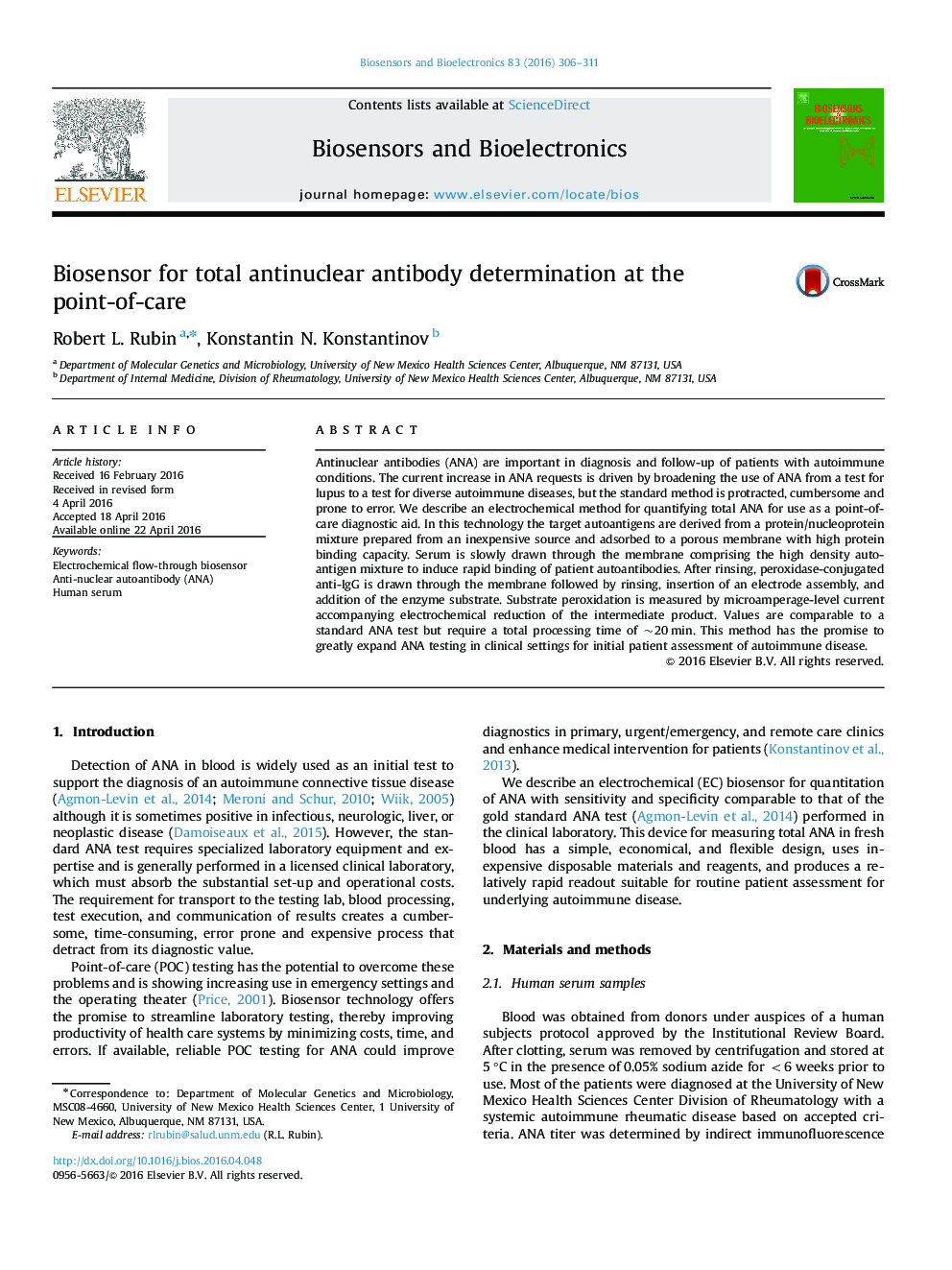| Article ID | Journal | Published Year | Pages | File Type |
|---|---|---|---|---|
| 866234 | Biosensors and Bioelectronics | 2016 | 6 Pages |
•Total autoantibodies in human sera were measured electrochemically in only 20 min•The sensor showed good quantitative correspondence to the standard immunofluorescence assay on sera from patients.•Biosensor assessment regarding assay reproducibility, storage stability, and exclusion of contaminants was highly favorable.•This device has the promise to shift current practice from centralized laboratories to patient-centered environments.
Antinuclear antibodies (ANA) are important in diagnosis and follow-up of patients with autoimmune conditions. The current increase in ANA requests is driven by broadening the use of ANA from a test for lupus to a test for diverse autoimmune diseases, but the standard method is protracted, cumbersome and prone to error. We describe an electrochemical method for quantifying total ANA for use as a point-of-care diagnostic aid. In this technology the target autoantigens are derived from a protein/nucleoprotein mixture prepared from an inexpensive source and adsorbed to a porous membrane with high protein binding capacity. Serum is slowly drawn through the membrane comprising the high density autoantigen mixture to induce rapid binding of patient autoantibodies. After rinsing, peroxidase-conjugated anti-IgG is drawn through the membrane followed by rinsing, insertion of an electrode assembly, and addition of the enzyme substrate. Substrate peroxidation is measured by microamperage-level current accompanying electrochemical reduction of the intermediate product. Values are comparable to a standard ANA test but require a total processing time of ~20 min. This method has the promise to greatly expand ANA testing in clinical settings for initial patient assessment of autoimmune disease.
